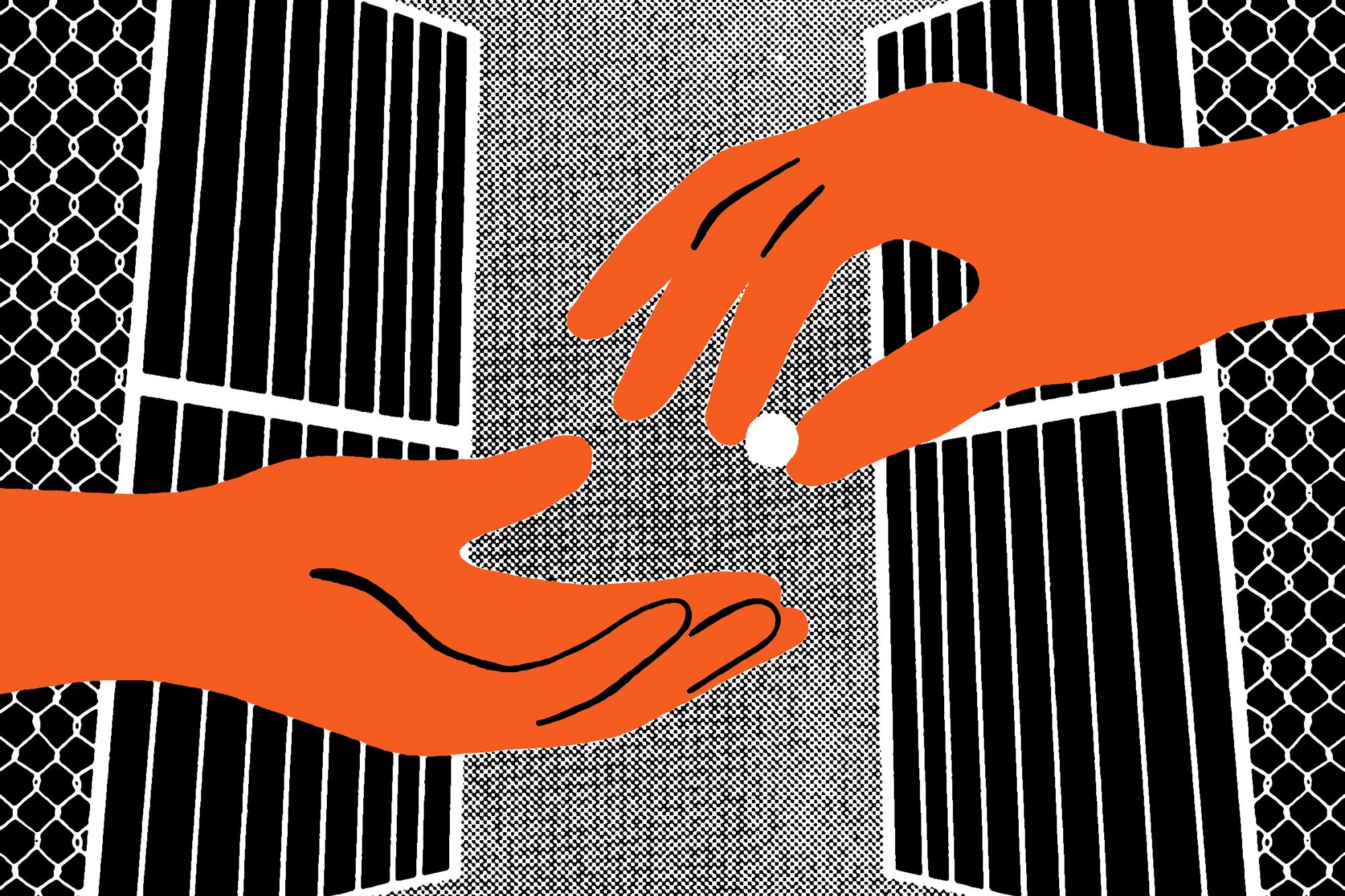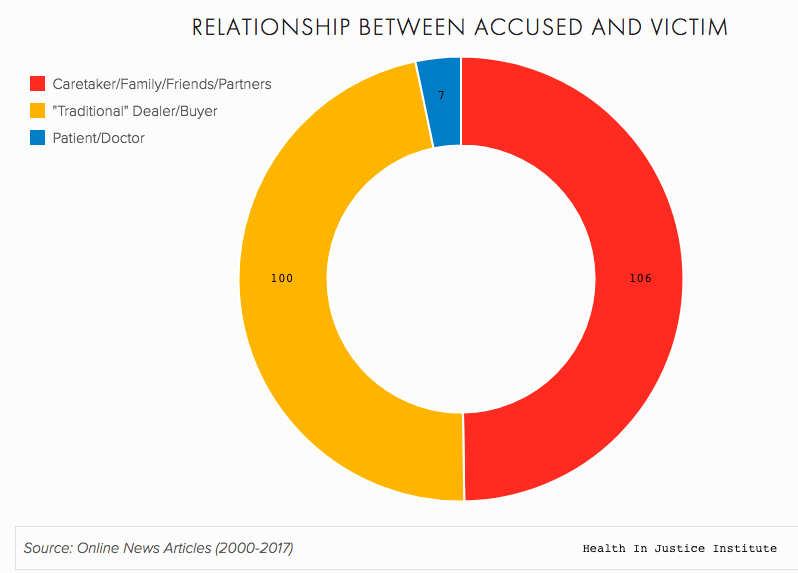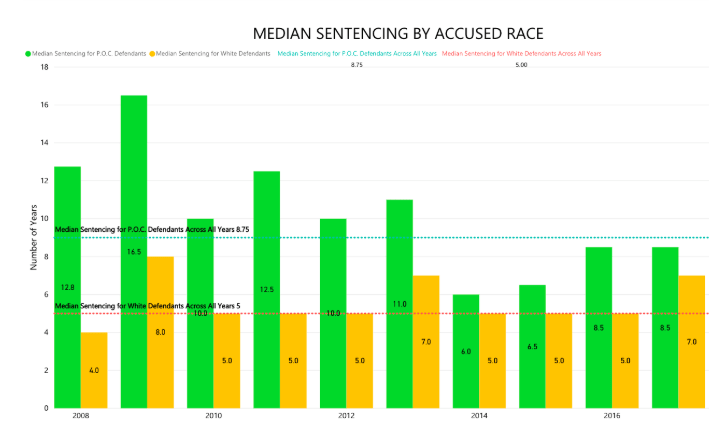Charging ‘Dealers’ with Homicide: Explained
In May 2016, 26-year-old Caleb Smith was prepping for medical school entry exams, and ordered what he thought was Adderall off the internet to help him study. After the package arrived at his home in Williamsport, Pennsylvania, his girlfriend, 26-year-old Amanda Leach, asked to try some. Smith obliged, and days later, Leach was found dead […]

In May 2016, 26-year-old Caleb Smith was prepping for medical school entry exams, and ordered what he thought was Adderall off the internet to help him study. After the package arrived at his home in Williamsport, Pennsylvania, his girlfriend, 26-year-old Amanda Leach, asked to try some. Smith obliged, and days later, Leach was found dead from an overdose in her apartment. The stimulant Smith thought he ordered online turned out to be illicitly manufactured fentanyl, a synthetic opioid responsible for tens of thousands of deaths across the country.
Prosecutors with the U.S. Attorney’s Office for the Middle District of Pennsylvania charged Smith with “drug-induced homicide” for giving Leach the deadly dose, triggering a 20-year mandatory minimum sentence. With the federal government bearing down on him, a guilt-stricken Smith killed himself. He was an aspiring doctor who had no criminal record and no intention of killing his girlfriend. But none of that mattered to federal prosecutors who, amid one of the worst drug crises in America’s history, have been directed to get tough on dealers as part of an aggressive nationwide response.
Smith’s story is part of a trend among prosecutors ostensibly fighting the opioid epidemic. Known as “drug-induced homicide,” prosecutions like Smith’s are on the rise. According to a report by the Drug Policy Alliance, news articles about individuals charged with or prosecuted for drug-induced homicide increased by over 300 percent in just six years, to 1,178 in 2016 from 363 in 2011. Cases like these are difficult to track, and the numbers are most likely much higher. A New York Times investigation documented over 1,000 such prosecutions since 2015 in only 15 states.
Without any evidence that drug-induced homicide cases prevent dealers from dealing or users from using, this punitive tactic has become a favorite tool among prosecutors. Feeling pressure from communities in crisis to “just do something” about overdose deaths, prosecutors landed on this legal mechanism. Despite these harsh sentences, overdose deaths have continued to steadily rise.
Initially crafted during the “tough on crime” era of the ’80s and ’90s, drug-induced homicide provisions were intended for kingpins and major traffickers. Today, friends, family members, and as in Smith’s case, romantic partners of the overdose victim are all potential targets, effectively stretching the definition of a dealer beyond recognition. Even if a state does not have a drug-induced homicide statute on the books, prosecutors can often deploy criminal law in some form that turns an accidental overdose into homicide or manslaughter.
In the face of a massive drug crisis, substance use disorder experts, politicians, and law enforcement officials have rallied for a public health approach to the crisis rather than a law-and-order crackdown. But this more sympathetic method runs counter to old, punitive habits preferred by President Trump, who at a rally in March said, “If we don’t get tough on drug dealers, we are wasting our time. And that toughness includes the death penalty.”
This explainer will explore why the rising popularity of drug-induced homicide prosecutions is a disturbing reaction to the opioid crisis, and how these cases compound the tragedies that overdoses have already caused communities across the country.
Myth: Drug-induced homicide prosecutions deter dealers by “sending a strong message.”
Reality: Threats of harsh punishment do not deter drug dealers.
In Rhode Island, Superior Court Judge Kristin Rodgers handed down a 40-year sentence to a young, low-level dealer who sold $40 worth of heroin (which turned out to be laced with fentanyl) that led to the death of 29-year-old Kristen Coutu. At sentencing, Judge Rodgers said that this harsh punishment “should send a message to dealers,” according to local news reports.
Judges and prosecutors across America believe that if they publicize lengthy prison terms, dealers will think twice about their choice of employment. But there is little evidence that this “tough” message is sinking in.
Research by the Pew Charitable Trusts helps explain why that’s the case. “The theory of deterrence would suggest, for instance, that states with higher rates of drug imprisonment would experience lower rates of drug use among their residents,” authors of a 2018 Pew report write. But that theory is not supported by the evidence, which “found no statistically significant relationship between state drug imprisonment rates and three indicators of state drug problems: self-reported drug use, drug overdose deaths, and drug arrests.”
In other words, locking up low-level dealers had no effect on the number of people who died from overdoses. The chasm between evidence and policy is growing even wider in some states. The Rhode Island case, for example, led to the June 2018 enactment of Kristen’s Law, a drug-induced homicide statute named after Coutu that makes it easier to prosecute dealers, opening them up to life sentences if their customers fatally overdose. Mental health advocates and members of the medical community vocally opposed the legislation before it was signed into law.
A 2018 study by Rhode Island’s health department projected that, without health interventions like naloxone distribution or access to medication treatment, the state’s overdose rate will continue to rise into the year 2020. The study made no mention of imprisonment as a way to reduce overdose deaths.
Myth: Drug-induced homicide prosecutions help to slow the flow of drugs into our communities.
Reality: Increased enforcement and interdiction make the drug supply more dangerous.
America’s opioid crisis began with prescription painkillers. After crackdowns on doctors’ so-called pill mills, heroin became the primary driver of overdoses. Today, illicit fentanyl and its analogues cause more overdoses than heroin or any other drug. After one source of opioids is shut down, a new, more dangerous source is ready to fill demand, creating volatility in a drug’s supply.
Contrary to popular belief, there is no evidence that incapacitating drug sellers by “taking them off the street” results in sustained reductions in illicit drug supplies, increases in drug prices, reductions in overdose rates, or other trends these policies are intended to produce, according to research by drug policy experts. Authors of one study write, “The lack of evidence that tougher enforcement raises prices call into question the value, at the margin, of stringent supply-side enforcement policies in high-enforcement nations.”
There is, however, evidence that such interventions inadvertently produce higher levels of drug-related violence, unpredictable fluctuations in street drug supplies, and more adulteration. After one of Virginia’s biggest heroin dealers was busted in 2014, federal agents said the supply of heroin was interrupted. In the two years after the bust, overdoses of illicit fentanyl in Virginia spiked 366 percent from 2014 to 2016.
On the East Coast, dealers who once sold heroin are slowly being replaced by dealers who sell a much more deadly product. Enforcement efforts that only focus on disrupting the supply of drugs amounts to what one report called “the never-ending game of Whac-a-Mole.” Drug-induced homicide is a continuation of this unwinnable strategy that fails to address the underlying psychological motivations that cause people to continue to seek out deadlier drugs.
Myth: Victims and their families want justice.
Reality: Surviving loved ones often oppose harsh punishments.
Chad Baker, of Newark, Ohio, died on the morning of May 29, 2015, three days before his 35th birthday. Baker had an on-again, off-again relationship with heroin. On what would turn out to be his final run, he bought heroin from Tommy Kosto. Chad and Tommy had become friends while serving time together for drug-related offenses.
Both were working toward recovery but had slipped up along the way. Instead of seeing Kosto as a friend of the victim, Licking County Prosecutor Bill Hayes saw him as a culprit in Baker’s death, and charged him with involuntary manslaughter and “corrupting another with drugs,” among other charges. Kosto was eventually convicted for supplying drugs that killed his friend.
In an interview in the New Republic, journalist Jack Shuler asked Chad’s father, Jeff Baker, his feelings about the case. Baker told Shuler that at first he wanted a harsh sentence for Tommy Kosto. After the sentencing, his feelings changed, as he thought about what his son would want. “Leave these people alone. I made the choice on my own,” Baker said, channeling his son. “Tommy is sitting in prison because he broke the law. That’s the way I look at it,” Baker told Shuler. “Did he kill my son? No. He broke the law.”
To protect their friends from potential prosecution in the event of an overdose, drug users across the country have organized a project called the Reframe the Blame campaign. While it’s not a legally binding document, the users are helping people who use drugs draft their last wills and testaments to fight against unnecessarily harsh punishments for co-users, many of whom sell small amounts of drugs to support their own substance use disorders.
Other families surviving their loved one’s deaths have come to similar conclusions. Chelsea Laliberte’s brother, Alex, died from an overdose in 2008 when he was just 20 years old, after using heroin he bought from a friend in Chicago. A decade later, she’s an activist and vocal critic of drug-induced homicide prosecutions.
“They were all doing [heroin] together. So as a moral person, I felt that that was very hypocritical to go after somebody, when my brother was doing the same thing,” Laliberte told a local TV news reporter. “They both had the same opportunity to die.”
Myth: Drug-induced homicide prosecutions prevent overdose deaths.
Reality: The threat of jail prevents overdose witnesses from dialing 911.
Many states with drug-induced homicide statutes on the books also have “911 Good Samaritan Laws,” which grant special immunity (from charges like possession) for those who call for emergency help during an overdose. Good Samaritan laws were intended to send a supportive message: It is safe for witnesses to call for help, even if there are drugs at the scene.
But prosecuting overdose witnesses for murder sends the opposite message, creating a chilling effect among those who would otherwise seek life-saving help. Researchers have found evidence of this reluctance, noting that many witnesses are indeed afraid to call for help because they fear legal consequences.
Users are getting mixed messages at best. The threat of a homicide charge undermines the utility of 911 Good Samaritan laws by scaring people out of calling for help, therefore exacerbating the very problem they purport to solve.
Myth: These provisions are needed to catch the “big fish.”
Reality: Low-level dealers, family, friends, and romantic partners are targeted.
In upstate New York, 29-year-old Richard Gaworecki, of Broome County, was charged with criminally negligent homicide for selling heroin that led to the death of 26-year-old Nicholas McKiernan. Both men went to the same high school and were part of a group of friends who frequently used heroin together. When Gaworecki was arrested, police found a syringe that he had been using, evidence of his own substance use disorder.
“Whenever we can, we separate out dealers and users,” Broome County District Attorney Steve Cornwell said during a press conference. “That’s the goal. But when someone is selling drugs that kill somebody, then they can expect to be charged. We’re going to find those people and target that investigation to get to the root of the crime.” There were 95 overdose deaths in Broome County in 2016, and 84 of them led to homicide investigations, according to local news reports.
Far from a kingpin, let alone an actual dealer, Gaworecki bought heroin in small quantities for himself and his friends to use, according to multiple sources interviewed by The Appeal. This is typical of small drug user networks: To support their habit, addicted users often buy a few extra bags for their friends, and vice versa. On a different day, it could have easily been Gaworecki who overdosed on a bag he bought from a friend.
Yet, it’s much easier for prosecutors to target small-time dealers than major dealers, since the latter strategically insulate themselves from activities that could get them caught. The further removed dealers are from their product, the more difficult it becomes for prosecutors to make their case.
Researchers at Northeastern University’s Health in Justice initiative, a team that includes these reporters, analyzed a random sample of drug-induced homicide cases reported in the media, and found that fewer than half the cases involved a traditional dealer-user relationship. Scores of these prosecutions involved a desperate user like Gaworecki, who would benefit tremendously from substance use disorder treatment, instead of lengthy prison sentences.

Myth: Drug-induced homicide prosecutions are part of a broader “public health approach.”
Reality: Threatening stiff penalties is making the crisis worse, and people of color are more likely to be targeted by punitive drug laws.
Today’s opioid crisis might be the deadliest on record, but it is not the first time drugs have embroiled the country. America’s perception of substance use disorder throughout history has always been closely tied to who is using.
Perhaps the biggest myth believed by the many people is that the opioid crisis has ushered in a sympathetic, “public health approach” to dealing with drug using. Some have posited that the approach shifted when drug was portrayed as penetrating rural and white communities, despite research showing that the overdose death rate among African Americans is higher than whites in several cities and states.

Politicians and police say they have learned their lesson from the crack-cocaine era, where people of color were arrested en masse for simple possession. But the Health in Justice research shows that people of color are more frequently targeted in drug-induced homicide cases than white users and dealers, part of a broader pattern of the justice system’s selective application of the law. The disparate impact of drug-induced homicide laws on people of color is a reminder that despite the newfound compassion, American drug policy still punishes people with substance use disorder.
Resource: Since defendants in drug-induced homicide cases are often drug users themselves, they rarely have the legal resources to adequately fight the case. Researchers at Northeastern University’s Health In Justice Action Lab have put together a defense toolkit for attorneys trying to help their clients.
